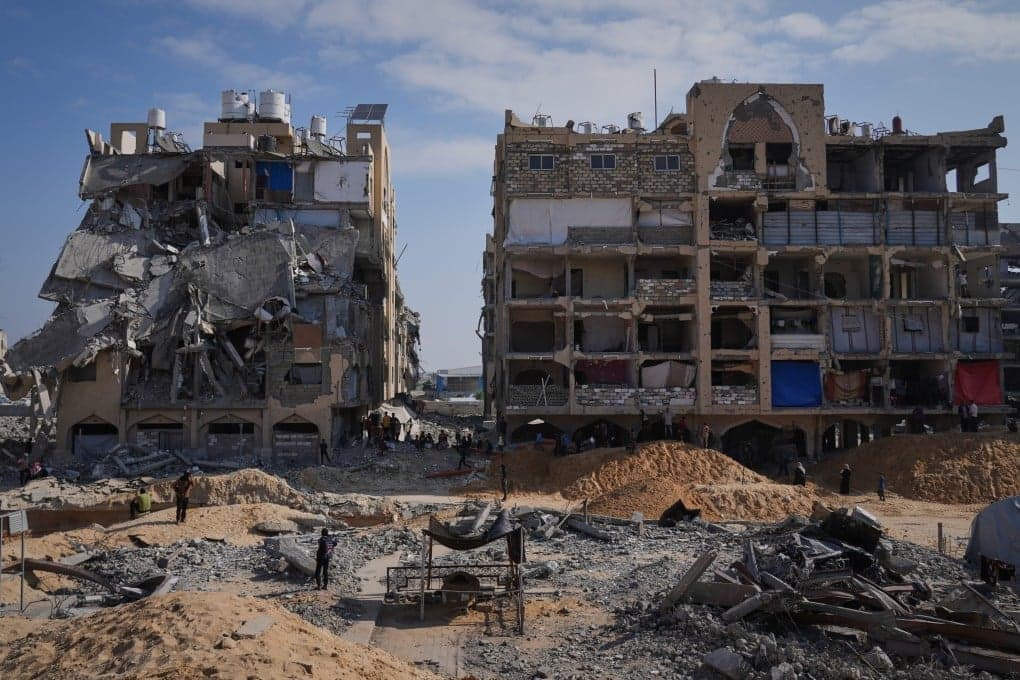Loading News Article...
We're loading the full news article for you. This includes the article content, images, author information, and related articles.
We're loading the full news article for you. This includes the article content, images, author information, and related articles.
A fragile nine-day ceasefire in Gaza faced significant challenges on Sunday, October 19, 2025, as both Israeli forces and Hamas accused each other of violations, leading to renewed hostilities and raising concerns among Kenyans about regional stability and humanitarian impact.

The delicate ceasefire in Gaza experienced its first major test on Sunday, October 19, 2025, as Israeli forces launched a series of strikes and a security official announced a halt to aid transfers into the territory. This came after Israel alleged a violation by Hamas, an accusation swiftly countered by the Palestinian group.
The Israeli military stated it had resumed enforcement of the ceasefire after what it described as 'violations' by Hamas, signaling an end to strikes that it claimed were in response to earlier attacks on its forces. 'In accordance with the directive of the political echelon, and following a series of significant strikes in response to Hamas’ violations, the IDF has begun the renewed enforcement of the ceasefire,' the military said in a statement.
Gaza's civil defence agency and hospitals reported that a series of Israeli airstrikes across the territory on Sunday killed at least 45 people, an updated toll from an earlier count of 33.
The recent ceasefire, which had held for nine days, was a result of intense international mediation efforts aimed at de-escalating a protracted conflict that has claimed thousands of lives and displaced millions. The region has a long history of intermittent ceasefires and renewed hostilities, often triggered by perceived breaches or retaliatory actions. For Kenyans, the stability of the Middle East has implications for global oil prices and regional security dynamics, given Kenya's reliance on imported oil and its role in East African peace initiatives.
Ceasefire agreements are typically governed by international humanitarian law, which mandates the protection of civilians and the unhindered flow of humanitarian aid. Violations of these agreements can lead to severe international condemnation and potential sanctions. The United Nations and various international bodies often play a crucial role in monitoring and verifying compliance with such agreements, though enforcement remains a significant challenge.
Both Israeli and Hamas officials have presented conflicting accounts of the events leading to the renewed strikes. The Israeli military asserted it struck dozens of Hamas targets across the Gaza Strip. Conversely, Hamas accused Israel of violating the ceasefire, leading to a cycle of blame that complicates de-escalation efforts. Humanitarian organisations operating in Gaza have consistently highlighted the dire conditions faced by civilians, with aid agencies like the Kenya Red Cross expressing concern over the disruption of essential supplies. (Kenya Red Cross, October 2025)
The breakdown of the ceasefire carries significant risks, including a full-scale resumption of conflict, further humanitarian crises, and increased regional instability. For Kenya, a prolonged conflict could impact trade routes, energy costs, and potentially lead to an influx of refugees, placing additional strain on resources and diplomatic efforts.
The precise sequence of events that led to the alleged ceasefire violations remains contested, with both sides offering differing narratives. Independent verification of these claims is challenging amidst ongoing hostilities. The extent of damage and the full humanitarian impact of the renewed strikes are also still being assessed.
As of Monday, October 20, 2025, at 7:11 AM EAT, the situation remains fluid, with international calls for restraint and a return to the ceasefire. Diplomatic efforts are expected to intensify to prevent a further escalation of violence. The United Nations Security Council may convene to discuss the situation and explore potential resolutions.
Observers will be closely monitoring statements from both Israeli and Hamas officials, as well as the efforts of international mediators. The resumption of humanitarian aid into Gaza will be a critical indicator of de-escalation. The response of regional and international powers will also be crucial in shaping the trajectory of the conflict.
Keep the conversation in one place—threads here stay linked to the story and in the forums.
Other hot threads
E-sports and Gaming Community in Kenya
Active 6 months ago
Popular Recreational Activities Across Counties
Active 6 months ago
The Role of Technology in Modern Agriculture (AgriTech)
Active 6 months ago
Investing in Youth Sports Development Programs
Active 6 months ago